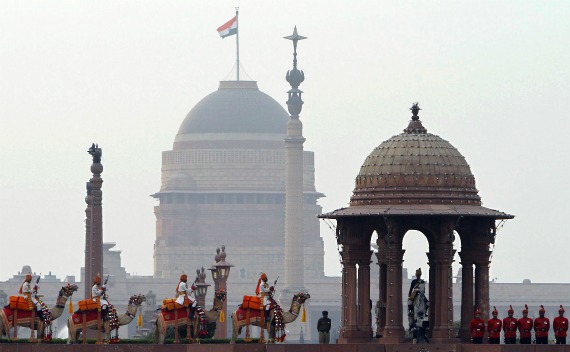Can India “Go It Alone”?
More on:

Liz’s post on India got me thinking about an article I published last year in Foreign Affairs on the fate of the U.S.-Indian partnership.
Liz bluntly titled her post, “India’s message to China and the United States: we’ll go it alone.” And that could mean two things:
(1) India’s fate is in India’s hands, not yours, or
(2) We’ll stay non-aligned, thank you very much.
But the fact is, India has moved well beyond non-alignment. And Indian policy will increasingly intersect with Chinese and American policies in important ways.
Sure, India’s fate is largely in India’s hands because the country can hardly bolster its emergence as a major power without economic growth. And while trade has grown, India’s growth remains mostly internally driven.
What’s more, India needs to advance several important domestic social and economic transitions. And so the bottom line is that the central questions about India’s future are indeed India’s to answer. They include:
- Will India’s choices facilitate an economically open, globally integrated India?
- Will India’s choices shrink its wealth divide?
- Will India’s choices expand its middle class?
- Will India’s choices strengthen its physical infrastructure?
And so on.
But here’s the thing about "going to alone": India’s success will increasingly depend on how New Delhi (and especially India’s 29 states) respond to opportunities generated beyond the country’s borders.
Take India’s economic transition:
India manufactures too little. And despite an enthusiastic “Look East” policy that aims to better integrate India with East Asia, its prospects are constrained by a lack of economic integration, not least into Asian supply chains.
But China’s choices—and India’s response to them—could change all that. Rising costs in China—some the deliberate result of continuous wage hikes and other policy changes in Beijing and the provinces—will give India an opportunity to make radically different policy choices itself. Such choices include bolstering manufacturing through new manufacturing zones, but also tax reform and labor reform. And all of these have either stalled out or are politically fraught in India.
It’s true, then: India’s fate is in India’s hands. But it’s also true that India’s success will increasingly be a function of how it does or does not seize opportunities being created by shifts taking place more widely in Asia and globally.
Then there’s the fate of India’s nonalignment. Debates rage in New Delhi; Indian foreign policy is in transition. Indeed, India has moved beyond nonalignment. But its new foreign policies and strategic doctrines are emerging only slowly. This evolution may ultimately prove conducive to a more expansive partnership with the United States around the world, but that is not assured.
So that’s one reason why a new report from CFR and the Aspen Institute India should be widely read. It offers tantalizing possibilities.
But the big questions are these:
- What will replace nonalignment as the basis of Indian foreign policy? And
- Will India leverage its growth, not to mention its seat at the new top tables of international relations, like the G20, into political influence and leverage?
For their part, the United States and others have choices to make about their relations with India too.
Washington will need to figure out how to be sensitive to Indian equities (and especially core security interests) as it disengages militarily from Afghanistan and attempts to renegotiate its increasingly fraught relationship with Pakistan.
But India is not going it alone in this important sense: notwithstanding differences at the United Nations, particularly over New Delhi’s abstention on a key Libya-related vote, India continues to publicly associate itself with the United States in unprecedented ways.
It has backed U.S.-supported resolutions against Iran in the International Atomic Energy Agency and enforces UN Security Council resolutions against Tehran.
It has stopped North Korean shipping in its waters and inspected cargo.
It is the fifth-largest donor of reconstruction assistance to Afghanistan.
It participates in nearly every U.S.-supported multinational technology initiative for tackling supply side answers to climate change, including projects on hydrogen, carbon sequestration, and nuclear fusion.
It is struggling to deal with the fallout of its nuclear liability law, in part to accommodate U.S. companies.
It provided tsunami relief in 2004 through an ad hoc naval partnership with the United States and two of Washington’s closest military allies. And that type of cooperation continues on an ad hoc basis: India’s military conducts exercises with every U.S. armed service, and has exercised trilaterally with the United States and Japan, despite Chinese protests.
Taken together, these questions and realities mean that India’s choices are certainly its own. But few in India believe that remaining aloof will ever again be a viable strategic or economic option.
More on:
 Online Store
Online Store
